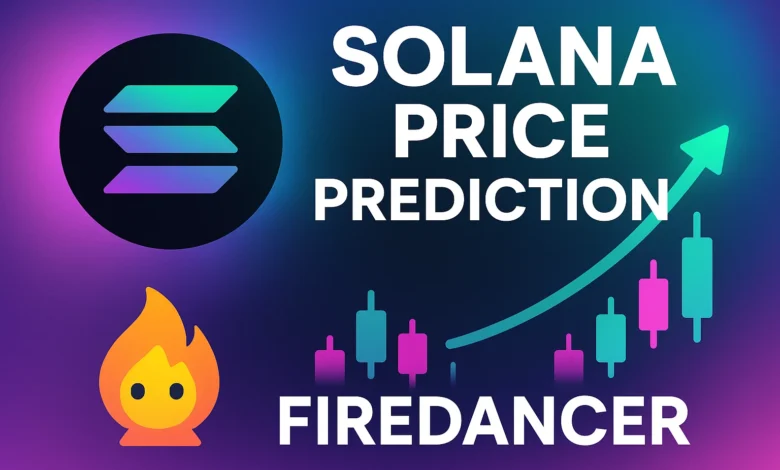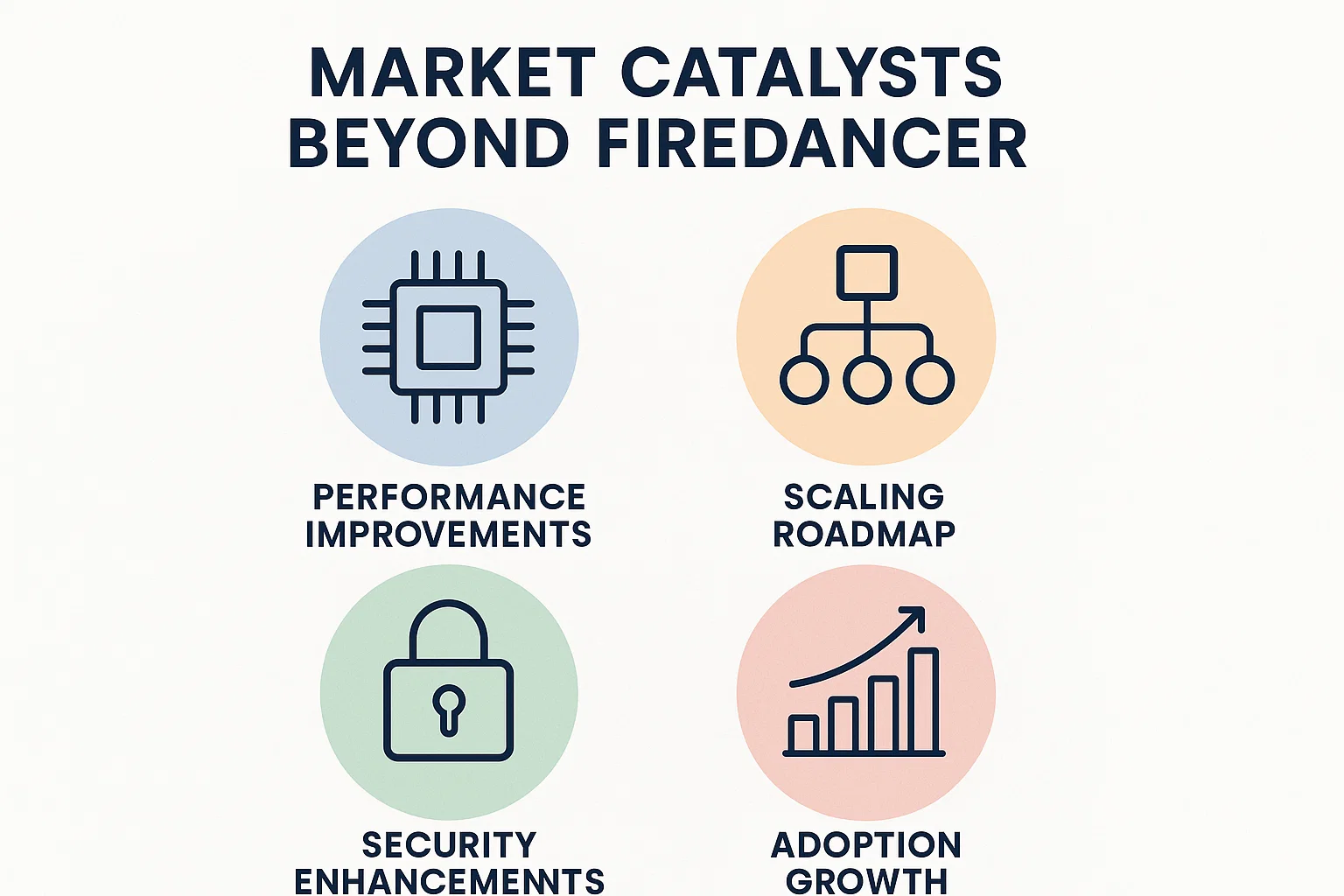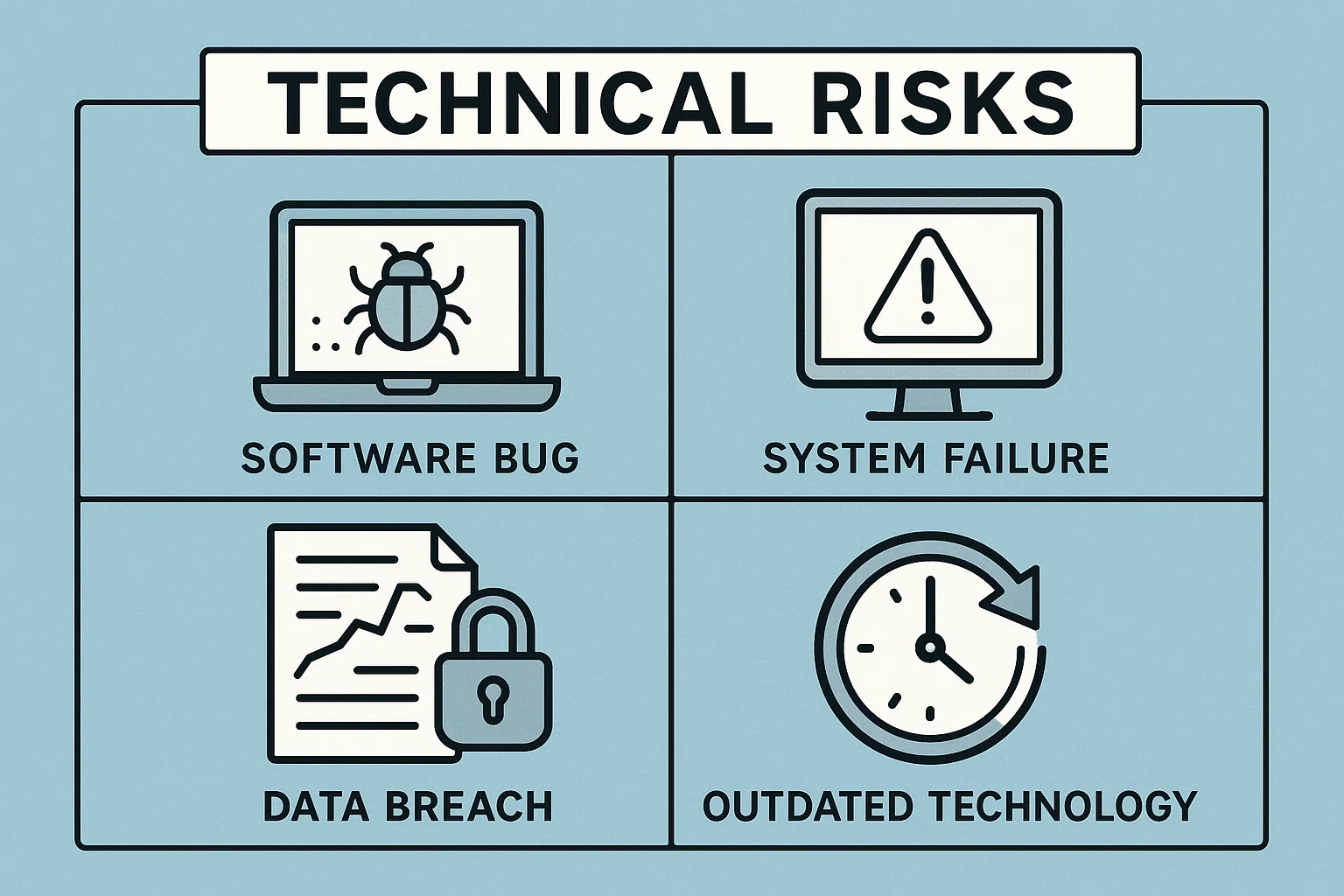Solana Price Prediction: Firedancer Seeks Fastest Blockchain

The cryptocurrency market continues to evolve at breakneck speed, with technological innovations driving the next wave of blockchain adoption. Among the most anticipated developments in 2025 is Solana price prediction Firedancer, a revolutionary upgrade that promises to transform SOL into the fastest blockchain network in existence. As investors and developers alike turn their attention to this groundbreaking validator client, understanding how Firedancer could impact them is crucial.
Solana’s price prediction becomes crucial for making informed investment decisions. With transaction speeds potentially reaching over 1 million transactions per second, the Firedancer upgrade represents more than just a technical milestone—it could fundamentally reshape Solana’s position in the competitive blockchain landscape and drive significant price appreciation for SOL tokens.
Solana’s Current Market Position
Before diving into the Solana price prediction analysis by Firedancer, it’s essential to understand where Solana currently stands in the cryptocurrency ecosystem. Solana has established itself as one of the leading layer-1 blockchain platforms, competing directly with Ethereum, Cardano, and other smart contract networks.
The blockchain has gained significant traction due to its innovative Proof of History (PoH) consensus mechanism, which works in conjunction with Proof of Stake (PoS) to achieve remarkable transaction speeds. Currently, Solana processes approximately 65,000 transactions per second theoretically, though real-world performance typically ranges between 3,000-5,000 TPS under normal conditions.
Solana’s Competitive Advantages
SOL’s competitive positioning is based on several key factors. The network offers substantially lower transaction fees compared to Ethereum, making it attractive for decentralized applications (dApps), NFT projects, and DeFi protocols. The average transaction cost on Solana remains below $0.01, whereas Ethereum gas fees can spike to hundreds of dollars during peak network congestion.
Developer activity on Solana has consistently grown, with thousands of projects building on the ecosystem. From decentralized exchanges like Jupiter and Orca to NFT marketplaces like Magic Eden, the Solana ecosystem exhibits robust development momentum. This vibrant ecosystem creates organic demand for SOL tokens, which are required for transaction fees and staking.
What is Firedancer and Why Does It Matter?
The Firedancer upgrade represents one of the most significant technological developments in Solana’s history. Developed by Jump Crypto, Firedancer is an independent validator client written entirely in C (as opposed to Solana’s original Rust-based client), aiming to improve network performance, stability, and decentralization.
Architecture of Firedancer
Firedancer’s architecture focuses on extreme optimization and efficiency. The development team has designed the client from the ground up to maximize hardware utilization and minimize latency. By leveraging low-level programming techniques and custom-built components, Firedancer can theoretically process over 1 million transactions per second on appropriately configured hardware.
The validator client introduces several architectural improvements, including enhanced memory management, optimized networking protocols, and parallel processing capabilities. These technical enhancements address some of the network outages and performance bottlenecks that have previously affected Solana’s reputation.
How Firedancer Enhances Network Decentralization
Beyond raw speed, Firedancer seeks to make SOL more decentralized by introducing client diversity. Currently, nearly all Solana validators run the same client software, creating a single point of failure. If a critical bug affects this client, the entire network could experience disruptions.
With Firedancer providing an alternative validator implementation, the network gains resilience. Validators can choose between different clients, meaning a bug in one implementation won’t necessarily compromise the entire blockchain. This client diversity represents a crucial maturation step for Solana’s infrastructure, aligning with best practices observed in more established networks, such as Ethereum.
Solana Price Prediction: Short-Term Analysis (2025)
When analyzing the Solana price prediction for 2025, several factors converge to create a potentially bullish scenario for SOL tokens, as per Firedancer’s impact. The successful implementation of Firedancer could serve as a significant catalyst for price appreciation.
Q2-Q3 2025 Price Targets
Following the anticipated mainnet deployment of Firedancer in mid-2025, conservative estimates place SOL’s (SOL) price target between $180 and $250. This projection assumes successful implementation without major technical issues and continued growth in ecosystem adoption.
The bullish case scenario, which factors in increased institutional adoption and favorable macroeconomic conditions, suggests SOL could reach $300-$400 by the end of 2025. This upper range depends on several variables, including overall cryptocurrency market sentiment, Bitcoin’s performance, and regulatory clarity in insignificant markets.
Market Catalysts Beyond Firedancer

While the Firedancer upgrade Solana receives serves as the primary technical catalyst, other factors will influence short-term price action. The potential approval of a Solana ETF in the United States could dramatically increase institutional exposure to SOL. Several asset managers have expressed interest in launching Solana-based investment products, which would provide traditional investors with regulated access to the cryptocurrency.
Additionally, growing adoption of Solana Pay for merchant transactions and integration with major payment processors could drive utility-based demand for SOL tokens. The network’s mobile initiatives, including the Saga phone and mobile-optimized decentralized applications (dApps), position Solana uniquely in the mobile-first blockchain space.
Long-Term Solana Price Forecast (2026-2030)
Looking beyond the immediate, Firedancer seeks to make SOL the fastest narrative; long-term price predictions require analyzing Solana’s potential market position in the evolving blockchain landscape.
2026-2027 Price Projections
Assuming Firedancer successfully delivers on its performance promises and Solana maintains its ecosystem growth trajectory, the 2026-2027 period could see SOL investment prediction targets ranging from $40 million to $600 million. This timeframe enables the full realization of Firedancer’s benefits and potential network effects resulting from increased adoption.
The key variable in this projection involves Solana’s ability to capture market share from competing blockchains. If Solana can attract major enterprises and institutional dApp developers seeking high-performance infrastructure, the value accrual to SOL tokens could exceed current expectations.
2028-2030 Bull Case Scenario
The most optimistic Solana price forecast for the end of the decade places SOL between $800 and $1,200, representing a market capitalization that would position Solana firmly among the top-3 cryptocurrencies by market capitalization. This scenario assumes widespread blockchain adoption, with Solana emerging as the preferred infrastructure for high-throughput applications.
For this bull case to materialize, several conditions must align. The fastest blockchain network designation must translate into practical advantages that developers and users value. Network uptime must remain stable, security must be maintained at the highest levels, and the ecosystem must continue attracting top-tier projects and talent.
Bear Case and Risk Factors
Conversely, a bear case scenario must account for potential challenges. If Firedancer implementation encounters significant delays or technical issues, market confidence could erode, potentially pushing SOL prices down to $80-$120 in the medium term. Competitive pressure from emerging layer-1 blockchains or successful Ethereum scaling solutions could also limit Solana’s upside.
Regulatory uncertainty represents another significant risk factor. While Solana’s relatively centralized development structure offers advantages for rapid innovation, it may also attract regulatory scrutiny in jurisdictions that implement strict cryptocurrency frameworks.
Technical Analysis: SOL Price Patterns and Indicators
Examining technical indicators provides additional context for the Solana price prediction Firedancer analysis. Chart patterns, trading volumes, and momentum indicators offer insights into market sentiment and potential price movements.
Support and Resistance Levels
As of late September 2025, SOL has established key support levels around $140-$145, representing areas where buying pressure has historically emerged. This support zone coincides with the 200-day moving average, a widely watched technical indicator that often serves as a barometer for long-term trends.
Resistance levels exist at $165-$170 and $190-$195. Breaking through these resistance zones with significant volume would signal strong bullish momentum and potentially accelerate upward price movement. The Solana network performance improvements from Firedancer could provide the fundamental catalyst needed to break through these technical barriers.
Volume Analysis and Market Liquidity
Trading volume metrics indicate robust market interest in SOL. Daily trading volumes consistently exceed $2 billion across major exchanges, providing sufficient liquidity for both retail and institutional participants. This liquidity depth reduces slippage for large transactions and generally supports price stability.
The derivatives market for SOL has also matured significantly, with futures and options products available on multiple platforms. Open interest in SOL futures contracts serves as a proxy for institutional engagement, signaling accumulation or distribution phases.
Impact of Network Performance on Tokenomics
The Firedancer upgrade to Solana directly affects SOL tokenomics through several mechanisms. Understanding these economic dynamics is crucial for accurate price prediction.
Transaction Fee Economics
As Solana transaction speed increases with Firedancer, the network can accommodate more activity without congestion-related fee increases. Paradoxically, while individual transaction fees may remain low, the total fee revenue captured by the network could increase substantially due to higher transaction volume.
Validators who stake SOL tokens receive a portion of these transaction fees along with inflation-based rewards. Improved network performance could attract more validators, further decentralizing the network while creating additional staking demand for SOL tokens.
Staking Dynamics and Token Velocity
Approximately 65-70% of SOL’s circulating supply is currently staked, representing strong network security and reduced selling pressure. The SOL price target calculations must account for this locked supply, which effectively reduces the liquid float available for trading.
As Firedancer improves validator profitability through increased transaction throughput, staking yields could become more attractive, potentially increasing the staked percentage even further. This dynamic creates a positive feedback loop where improved performance drives staking, which in turn reduces the circulating supply, thereby supporting higher prices.
Comparing Solana to Competing Blockchains
To properly contextualize the Solana price prediction narrative by Firedancer, comparing Solana’s capabilities to those of competing platforms provides an essential perspective.
Solana vs. Ethereum Scaling Solutions
Ethereum’s approach to scalability differs fundamentally from that of Solana. While Ethereum focuses on layer-2 rollups to increase transaction throughput, Solana pursues performance improvements at the base layer. Both approaches have merits, but they appeal to different use cases and developer preferences.
The fastest blockchain network debate often comes down to how performance is measured. Solana prioritizes raw speed and low latency, making it ideal for applications that require immediate finality, such as decentralized exchanges and gaming platforms. Ethereum’s layer-2 ecosystem offers a more diverse range of scaling solutions tailored to specific needs.
Solana vs. Emerging High-Performance Chains
Newer blockchain projects, such as Sui, Aptos, and Sei, compete directly with Solana in the high-performance segment. These platforms utilize modern programming languages and innovative consensus mechanisms, presenting a legitimate form of competition.
However, Solana’s advantage lies in its established ecosystem, battle-tested infrastructure, and strong developer community. The Firedancer aims to make SOL technologically competitive with these newer chains while preserving the network effects and ecosystem advantages that come from being an early mover in the space.
Ecosystem Growth and dApp Adoption
The value proposition underlying any blockchain scalability solution ultimately depends on real-world usage. Solana’s ecosystem growth provides fundamental support for price appreciation.
DeFi Activity on Solana
Decentralized finance protocols on Solana have experienced significant growth, with total value locked (TVL) reaching over $5 billion. Major protocols like Marinade Finance, Jito, Jupiter, and Kamino contribute to a thriving DeFi ecosystem that generates organic demand for SOL.
The Solana validator client improvements from Firedancer will enable even more sophisticated DeFi applications with complex execution requirements. High-frequency trading strategies, advanced derivatives protocols, and real-world asset tokenization platforms all benefit from the enhanced performance characteristics.
NFT and Gaming Platforms
Solana has emerged as a leading platform for NFT projects and blockchain gaming. The combination of low transaction costs and fast confirmation times creates an optimal environment for frequent interactions required by games and NFT marketplaces.
Projects like Star Atlas, Genopets, and numerous successful NFT collections demonstrate Solana’s appeal to creators and users in these categories. As these sectors continue to grow, they create sustained demand for SOL tokens, which are used for minting, trading, and in-game transactions.
Institutional Adoption and Investment Trends
Institutional interest in Solana has grown substantially, with venture capital firms, hedge funds, and traditional financial institutions allocating capital to the ecosystem.
Venture Capital Investment
Solana-based projects have attracted billions in venture capital funding. This investment flow creates a positive ecosystem flywheel where well-funded teams build high-quality applications, which attract users, increasing network activity and supporting the SOL token value.
Major venture firms, including Andreessen Horowitz (a16z), Multicoin Capital, and Jump Crypto, have made significant commitments to Solana ecosystem projects. This institutional backing provides both capital and expertise to help projects succeed.
Traditional Finance Integration
The potential for traditional financial institutions to leverage Solana represents a significant growth opportunity. Several banks and payment processors have explored using Solana for cross-border settlements, tokenized securities, and programmable payment rails.
If even a fraction of global payment volume migrates to blockchain rails, and Solana captures a meaningful share of this activity, the implications for SOL price target calculations would be profound. The cryptocurrency price analysis must account for these potential macro-level adoption scenarios.
Regulatory Landscape and Compliance Considerations
Regulatory developments have a significant impact on cryptocurrency valuations, and Solana faces both opportunities and challenges in this arena.
Securities Classification Debates
Questions about whether SOL constitutes a security under U.S. law have created uncertainty. The SEC’s approach to cryptocurrency regulation continues to evolve, and clarity on SOL’s classification would remove a significant overhang on its price.
Positive regulatory outcomes, such as confirmation that SOL is a commodity rather than a security, could trigger substantial price appreciation as institutional investors gain clarity on their ability to hold and trade the asset.
Global Regulatory Developments
Different jurisdictions approach cryptocurrency regulation differently. Europe’s Markets in Crypto-Assets (MiCA) regulation provides a clear framework for digital assets, which could potentially boost institutional adoption in European markets. Asian markets, particularly those in Singapore and Hong Kong, have also established supportive regulatory environments.
The Solana network’s performance improvements, courtesy of Firedancer, position the platform well for institutional adoption in jurisdictions with clear regulatory frameworks, as the enhanced reliability addresses concerns about network stability.
Risk Factors and Challenges
No investment analysis is complete without an honest assessment of risks. Several factors could negatively impact the Solana price prediction, as outlined in the Firedancer thesis.
Technical Risks

Despite rigorous testing, Firedancer’s mainnet deployment could encounter unforeseen issues. Network bugs, security vulnerabilities, or performance problems could damage Solana’s reputation and trigger sell-offs.
The complexity of blockchain systems means even well-tested code can behave unexpectedly under real-world conditions. Solana’s history includes several network outages, and while Firedancer aims to address these issues, implementation risks remain.
Competitive Threats
The blockchain space evolves rapidly, with competitors continually innovating. Breakthrough technologies from competing platforms could diminish Solana’s performance advantages, reducing the impact of the Firedancer upgrade.
Additionally, Ethereum’s roadmap includes significant performance improvements that could narrow the gap with Solana. If Ethereum achieves similar transaction speeds while maintaining its larger ecosystem and network effects, Solana’s value proposition becomes less compelling.
Market Cycle Risks
Cryptocurrency markets operate in cycles, with bull markets followed by bear markets that can see prices decline 70-90% from peaks. Even fundamentally strong projects experience dramatic price corrections during bear markets.
Timing investment decisions around market cycles is crucial. The SOL investment prediction must acknowledge that even if long-term fundamentals remain positive, short- to medium-term price action can be highly volatile and influenced by macroeconomic factors beyond Solana’s control.
Investment Strategies for SOL Holders
For investors considering positions in SOL based on Solana’s price prediction, the Firedancer analysis reveals several strategies that merit consideration.
Dollar-Cost Averaging Approach
Rather than attempting to time the market perfectly, systematically accumulating SOL over time through regular purchases can reduce the impact of volatility. This approach allows investors to build positions without excessive exposure to short-term price fluctuations.
The Firedancer mainnet launch represents a known catalyst, but the market may price in these expectations before or after the actual event. Dollar-cost averaging provides a disciplined approach that removes emotion from investment decisions.
Staking for Passive Income
Staking SOL tokens generates yields typically ranging from 6% to 8% annually, while supporting network security. For long-term holders confident in the Firedancer upgrade Solana thesis, staking provides additional returns while maintaining exposure to price appreciation.
Various staking options are available, ranging from exchange-based staking to native wallet staking and liquid staking protocols that offer staked SOL derivatives. Each approach has different risk-reward characteristics that investors should carefully evaluate.
Risk Management and Portfolio Allocation
Cryptocurrency investments should represent an appropriate portion of overall investment portfolios based on individual risk tolerance. Even with compelling fundamental narratives, such as the Solana price prediction and Firedancer story, prudent risk management dictates limiting exposure to speculative assets.
Setting stop-loss levels, taking partial profits at predetermined price targets, and maintaining diversification across multiple assets can help manage downside risk while maintaining exposure to the upside.
Conclusion
The Solana price prediction, as analyzed by Firedancer, reveals a compelling fundamental case for SOL appreciation. The technological improvements promised by Firedancer address fundamental limitations in the current network while positioning Solana to become the definitive high-performance blockchain platform.
With projected transaction speeds exceeding 1 million TPS, enhanced client diversity improving network resilience, and a vibrant ecosystem driving organic demand, Solana appears well-positioned for the next phase of blockchain adoption. Price predictions range from $180 to $250 in the short term to $800 to $1,200 by 2030 in bull-case scenarios, reflecting the transformative potential of these upgrades.
Read more: Chainlink Price Targets $30 With Institutional Interest Rising
